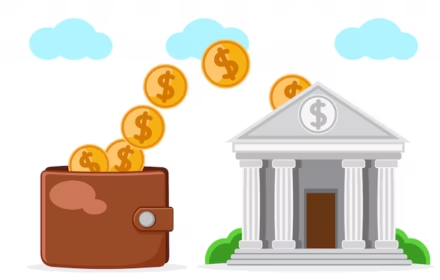In the conditions of an unstable economy, it is impossible to ignore the important question: why is an investment portfolio needed? The answer is obvious — to not lose money and achieve financial goals. It helps manage assets, reduce risk, and achieve stable profitability. Without a set of assets, even the most profitable investments can result in losses. A well-structured asset allocation, tailored to personal goals, is the foundation of financial security. An investment package is not just a list of assets, but a clear capital growth plan.
Principle of Portfolio Investment
Investing involves allocating capital among different types of financial instruments (stocks, bonds, funds, real estate, or precious metals). The main goal is to balance risk and return, making investments resilient to market fluctuations.

Each asset in the structure serves its purpose. Some provide growth, others ensure a stable cash flow, and others preserve capital value. This is the answer to why an investment portfolio is needed: it allows for a smart risk distribution, achieving a balance between profitability and reliability, and not depending on the success of a single instrument. This approach maintains confidence in the future and provides the opportunity to systematically grow capital.
Main Types of Investment Portfolios
There are three basic types distinguished by the level of risk and expected return. The options depend on the investor’s objectives, timeframes, and attitude towards volatility.
A conservative portfolio is designed to preserve capital. It contains a larger proportion of bonds and almost no stocks. A balanced portfolio includes both classes of instruments in almost equal proportions. An aggressive portfolio is built on stocks and growth funds. It is suitable for those seeking high returns and are willing to endure temporary setbacks.
For beginners, it is recommended to start with a more conservative model, gradually increasing the share of volatile assets.
Key Advantages of an Investment Portfolio
A set of assets transforms random investments into systematic financial management. The main advantage is diversification. Allocating capital among different asset classes reduces the risk of losses. In addition, an active basket:
- provides a clear link between investments and goals;
- allows for controlling and forecasting profitability;
- adapts to market changes;
- simplifies capital management;
- protects finances from inflation and currency fluctuations.
All these advantages make a portfolio an essential tool for any investor, from novice to professional.
How to Build an Investment Portfolio: Step-by-Step Algorithm
Understanding begins with setting a goal. It can be short-term (saving for a vacation), medium-term (buying a car), or long-term (saving for retirement). Then, it is necessary to assess your risk profile: how much are you willing to lose in the short term for future income. After that:
- select an investment strategy that aligns with your goals and timeframes;
- choose instruments — stocks, bonds, funds, currency pairs;
- allocate assets across classes and industries;
- open an account with a reliable broker;
- create a schedule for replenishment and evaluation.
A properly constructed portfolio allows you to manage not only investments but also emotions. Understanding why an investment portfolio is needed helps maintain composure even in unstable markets: diversified risks and a well-thought-out strategy reduce anxiety and eliminate impulsive decisions.
Popular Investment Portfolio Strategies
Strategies are divided into active and passive. The passive approach involves minimal intervention after the initial formation. The active approach requires constant adjustments and monitoring of market trends. There are also hybrid strategies where the foundation remains stable, but part of the set varies depending on the market conditions. In addition, strategies such as:
- dividend — selecting companies that consistently pay dividends;
- index — investing in ETFs tracking indices;
- thematic — investments in trending industries, such as IT or green energy.
Each strategy should align with the investor’s goals and level of expertise. Understanding why an investment portfolio is needed helps structure it according to experience and objectives. It is always better to start with simplicity — the clearer the structure, the easier it is to manage and adapt to market changes.
Which Investment Portfolio to Choose for a Beginner?
Several factors need to be considered. Firstly, the level of market knowledge and available instruments. Secondly, financial goals and the timeframe for achieving them. Thirdly, the attitude towards losses — how comfortable you feel with asset value declines.
Such a set of assets provides basic profitability, protects against inflation, and allows you to start exploring the market with minimal risks.
Rules for Managing an Investment Portfolio
Without effective control, a portfolio quickly loses relevance. Management includes assessing effectiveness, adapting to the market, and regular rebalancing. The latter is particularly important: asset allocation may shift due to the growth or decline of certain instruments.
Understanding why an investment portfolio is needed makes these actions deliberate — the goal is not just to invest money but to maintain the structure and achieve stable long-term results. Therefore, some securities are sold, while others are purchased.
It is important to track profitability, control broker commissions, monitor economic news, and know when to hold onto an asset and when to exit. A good investor acts based on a plan, not emotions.
Why Is Rebalancing Important?
Even an ideal pool of assets requires adjustments. Market changes, the rise of some assets, and the fall of others can distort the structure. Rebalancing helps restore the portfolio to its original allocation, reducing risk and maintaining the desired level of profitability.

For example, if stocks have grown to occupy 70% instead of the planned 50%, some of them should be sold and invested in more stable instruments. It is recommended to rebalance every six months or when the allocations deviate by 5–10%.
Conclusion
If you are still undecided about why an investment portfolio is needed, consider this: what will happen to your money without a plan? Spontaneous investments rarely bring benefits. Only a clear strategy, smart allocation, and regular management turn investments into a tool for achieving goals. Even for a novice, thoughtful capital management is accessible — the key is to act step by step and wisely. An investor’s portfolio is not just finances but control over the future!
 en
en  de
de  ar
ar  es
es  nl
nl  hi
hi  fr
fr  it
it  pt
pt  el
el 












